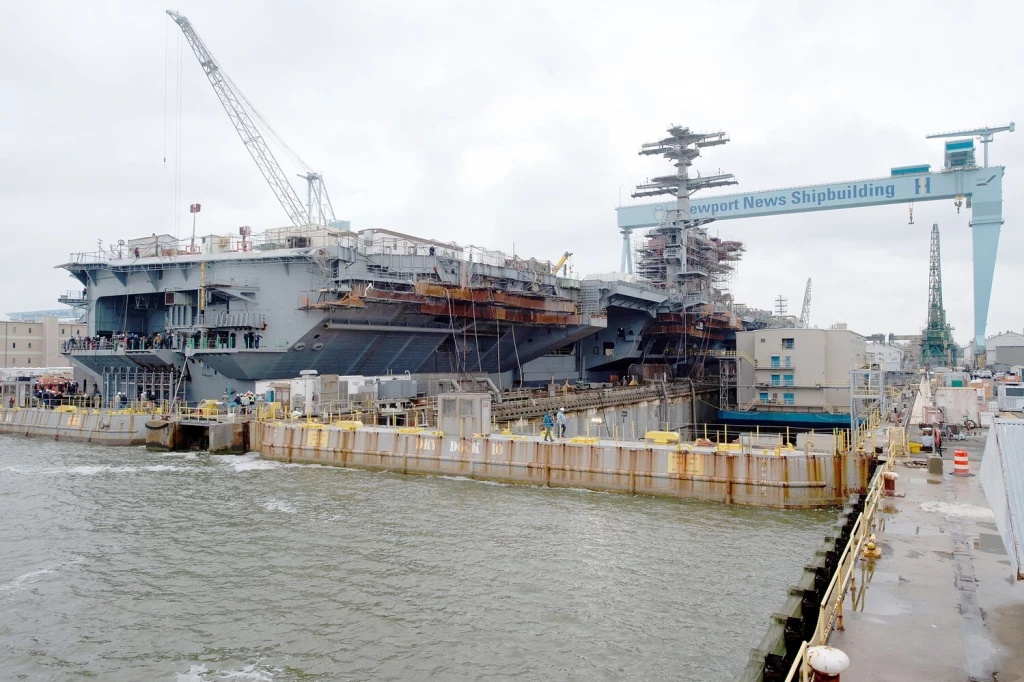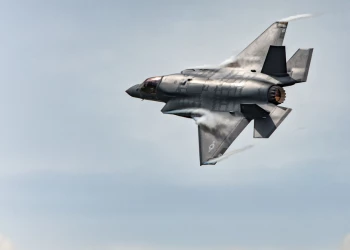Can New Legislation Reverse Navy Shipbuilding Failures?
Add bookmark
This spring, the Government Accountability Office’s (GAO) WatchBlog shared a post titled “U.S. Navy Shipbuilding Is Consistently Over Budget and Delayed Despite Billions Invested in Industry”. The blog highlights the government watchdog agency’s concern with the Navy’s inability to increase its output of ships despite nearly doubling its shipbuilding budget over the last 2 decades.
GAO is echoing concerns expressed across the federal government, including from the Trump administration and Congress. In response to the need to overhaul shipbuilding in the United States, the “One Big Beautiful Bill” was passed by Congress earlier this month.
This article will provide an overview of how new legislation will improve the Navy’s private sector industrial base investments, as well as highlight GAO’s findings in its report on shipbuilding and repairs.
To hear from defense supply chain leaders who work in important manufacturing areas such as shipbuilding, register for IDGA’s Defense Logistics & Support Summit taking place this September 29-30 in Reston, Virginia. The two-day event will feature discussions that encompass the cutting-edge technology shaping the future of defense logistics and procurement to support the warfighter, including the use of AI, data analytics for prediction & maintenance, unmanned delivery, and more.
Navy Shipbuilding in Crisis
The blog “U.S. Navy Shipbuilding Is Consistently Over Budget and Delayed Despite Billions Invested in Industry” outlines serious and ongoing challenges in the Navy’s shipbuilding efforts.
According to GAO, many shipbuilding programs are plagued by chronic delays, some up to 3 years, as well as significant cost overruns. A major contributor to these issues is the limited capacity of the U.S. shipbuilding industrial base. Shipyards are constrained by outdated infrastructure and a lack of physical space, while the industry also faces a shortage of skilled labor, making it difficult to meet growing demands.
The GAO blog post also highlights a disconnect between the Navy’s ambitious fleet expansion plans and the actual capabilities of private shipbuilders. Despite billions of dollars being funneled into infrastructure and workforce development, the Navy has not adequately evaluated whether these investments are effective. Furthermore, there is a lack of coordination between the Navy and the Department of Defense, which increases the risk of redundant or misaligned efforts. GAO concludes that without a more strategic, coordinated, and realistic approach to shipbuilding, the Navy will continue to fall short of its national defense objectives.
GAO provides two examples of failing Navy shipbuilding programs, the Virginia and Columbia Class Submarines.
Virginia Class Submarine – This submarine program, which produces nuclear-powered attack submarines, has faced persistent delays and cost overruns. Although the Navy planned to procure two submarines per year, the shipbuilders have struggled to meet this target due to workforce shortages, supply chain disruptions, and production inefficiencies. These challenges have led to delivery delays and increased costs, undermining the Navy’s ability to maintain its planned fleet size and readiness.
Columbia Class Submarine – This program is intended to replace the aging Ohio class as the sea-based leg of the U.S. nuclear triad. The Navy plans to spend around $130 billion to acquire 12 of these submarines. However, the lead submarine is already projected to be delivered 12 to 16 months late, with construction costs expected to exceed initial estimates by hundreds of millions of dollars. GAO found that the program has consistently fallen short of cost and schedule targets, and that the Navy has not conducted adequate schedule risk analyses. Despite years of effort, the program continues to face challenges with late materials, immature technologies, and incomplete design work, all of which threaten timely delivery and operational readiness.
A Legislative Response: One Big Beautiful Bill
Just before the 4th of July weekend, U.S. Congress passed the “One Big Beautiful Bill Act” which will allocate $29 billion to the country’s shipbuilding and maritime industrial base. The legislative package strives to improve American shipbuilding capabilities, with a focus on supporting the U.S. Navy and strengthening national security. Of the $29 billion, most will go towards the Navy to support its shipbuilding projects that have fallen behind schedule.
The “Enhancement of Department of Defense Resources for Shipbuilding” section in the act states shipbuilding funding will remain through September 30, 2029. The section also includes 36 items describing how the funding will be split. These amendments can be split into four categories: workforce, infrastructure, ship procurement, and advanced technologies.
Below are examples of three large areas of funding in each of the categories. If you are interested in seeing complete shipbuilding funding allocations, check out the entire bill here.
Workforce
Focused on expanding and training the shipbuilding labor force.
- $250,000,000 for the expansion of accelerated Training in Defense Manufacturing program
- $450,000,000 for additional maritime industrial workforce development programs
- $400,000,000 for expansion of collaborative campus for naval shipbuilding
Infrastructure
Investments in physical and industrial capacity needed to build and maintain ships.
- $250,000,000 for United States production of turbine generators for shipbuilding industrial base
- $450,000,000 for United States additive manufacturing for wire production and machining capacity for shipbuilding industrial base
- $750,000,000 for additional supplier development across the naval shipbuilding industrial base
Ship procurement
The largest funding category is focused on acquiring new ships, ship components, or capabilities.
- $5.4 billion for two additional Guided Missile Destroyer(DDG) ships
- $4.6 billion for a second Virginia-class submarine in fiscal year 2026
- $1.47 billion for the implementation of a multi-ship amphibious warship contract
On top of supporting the Navy, the bill also lays out ship procurement funding for the U.S. Marines, including $159 million for the leasing of ships for Marine Corps operations.
Advanced Technologies
Development and integration of AI, autonomy, unmanned systems, and advanced manufacturing.
- $450,000,000 for application of autonomy and artificial intelligence to naval shipbuilding
- $2.1 billion for development, procurement, and integration of purpose-built medium unmanned surface vessels
- $1.3 billion for expansion of unmanned underwater vehicle production
The White House Weighs In
On top of the billions of dollars in funding, the bill also supports the creation of a new Office of Maritime and Industrial Capacity under the National Security Council in the White House. This comes on the heels of an April executive order titled “Restoring America’s Maritime Dominance” that requires a Maritime Action Plan be submitted to the president.
“Restoring America’s Maritime Dominance” also directed the Secretary of Defense to assess how to use tools like the Defense Production Act Title III and private capital to expand shipbuilding and repair capabilities, strengthen supply chains, improve port infrastructure and grow the maritime workforce.













